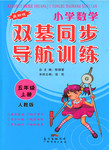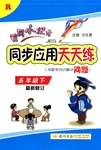题目内容
Cultural Center Adds Classes for Young Adults
The Allendale Cultural Center has expanded its arts program to include classes for young adults. Director Leah Martin announced Monday that beginning in September, three new classes will be offered to the Allendale community. The course titles will be Yoga for Teenagers; Hip Hop Dance: Learning the Latest Moves; and Creative Journaling for Teens: Discovering the Writer Within. The latter course will not be held at the Allendale Cultural Center but instead will meet at the Allendale Public Library.
Staff member Tricia Cousins will teach the yoga and hip hop classes. Ms. Cousins is an accomplished choreographer (舞蹈教师) as well as an experienced dance educator. She has an MA in dance education from Teachers College, Columbia University, where she wrote a thesis on the pedagogical (教学法的) effectiveness of dance education. The journaling class will be taught by Betsy Milford. Ms. Milford is the head librarian at the Allendale Public Library as well as a columnist for the professional journal Library Focus.
The courses are part of the Allendale Cultural Center’s Project Teen, which was initiated by Leah Martin, Director of the Cultural Center. According to Martin, this project is a direct result of her efforts to make the center a more essential part of the Allendale community. Over the last several years, the number of people who have visited the cultural center for classes or events has steadily declined. Project Teen is primarily funded by a generous grant from The McGee Arts Foundation, an organization devoted to bringing arts programs to young adults. Martin oversees the Project Teen board, which consists of five board members. Two board members are students at Allendale’s Brookdale High School; the other three are adults with backgrounds in education and the arts.
The creative journaling class will be cosponsored by Brookdale High School, and students who complete the class will be given the opportunity to publish one of their journal entries in Pulse, Brookdale’s student literary magazine. Students who complete the hip hop class will be eligible to participate in the Allendale Review, an annual concert sponsored by the cultural center that features local actors, musicians, and dancers. All classes are scheduled to begin immediately following school dismissal, and transportation will be available from Brookdale High School to the Allendale Cultural Center and the Allendale Public Library. For more information about Project Teen, contact the cultural center’s programming office at 988-0099 or drop by the office after June 1 to pick up a fall course catalog. The office is located on the third floor of the Allendale Town Hall.
1.Which of the following statements is correct?
A. Tricia Cousins will teach two of the new classes.
B. The new classes will begin on June 1.
C. People who want a complete fall catalogue should stop by the Allendale Public Library.
D. The cultural center’s annual concert is called Pulse.
2.According to Leah Martin, what was the direct cause of Project Teen?
A. Tricia Cousins was available to teach courses in the fall.
B. Community organizations were ignoring local teenagers.
C. The McGee Arts Foundation wanted to be more involved in Allendale’s arts programming.
D. She wanted to make the cultural center a more important part of the Allendale community.
3.Which of the following factors is implied as another reason for Project Teen?
A. The number of people visiting the cultural center has declined over the last several years.
B. The cultural center wanted a grant from The McGee Arts Foundation.
C. The young people of Allendale have complained about the cultural center’s offerings.
D. Leah Martin thinks classes for teenagers are more important than classes for adults.
4.This article is organized in which of the following ways?
A. In time order, from the past to the future.
B. Most important information first, followed by background and details.
C. Background first, followed by the most important information and details.
D. As sensational news, with the most controversial topic first.
1.A
2.D
3.A
4.B
【解析】
试题分析:The Allendale Cultural Center预计面向青少年增设三门新的课程,这三门课程包括青少年瑜伽,街舞以及创意性写作课程等。通过开设这三门课程,项目的主办人想使这个培训中心成为the Allendale community社区的一个重要部分,也想吸引更多的青少年。
1.A细节理解题。文章开头提到新学期将开设三个新班级,然后再根据第二段Staff member Tricia Cousins will teach the yoga and hip hop classes.可知Tricia Cousins将教授其中的两个班级,答案选A。
2.D细节理解题。根据文章第三段According to Martin, this project is a direct result of her efforts to make the center a more essential part of the Allendale community.可知Project Teen的原因就是她想使文化中心成为社区的重要部分,所以D选项正确。
3.A推理判断题。第三段介绍了the Allendale Cultural Center’s Project Teen这个项目,提到了to make the center a more essential part of the Allendale community.是这个项目的一个目的,然后作者又说the number of people who have visited the cultural center for classes or events has steadily declined,由此可知开设新课程也是为了吸引更多的青少年,所以A选项正确。
4.B推理判断题。通读全文可知,作者在谋篇布局上都是每段先提出主题句,然后再进行详细解释,也就是首先提出重要信息,然后用细节支撑,所以答案选B。
考点:考查社会生活类短文阅读。

 开心试卷期末冲刺100分系列答案
开心试卷期末冲刺100分系列答案 双基同步导航训练系列答案
双基同步导航训练系列答案 黄冈小状元同步计算天天练系列答案
黄冈小状元同步计算天天练系列答案 B. students C. citizens D. colleagues
B. students C. citizens D. colleagues